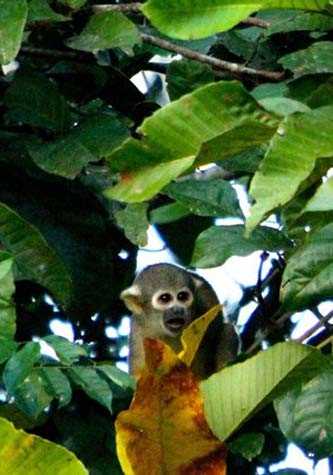The Amazon forest wakes up early, the birds start feeding, the monkeys start jumping from one tree to the other, and we, Lindblad Expeditions-National Geographic explorers, go into the skiffs to explore all this activity.
We started at 6 o’clock in order to visit Iquitos Caño. This is a beautiful area of black waters surrounded by ficus, cecropia, and acacia trees. It is amazing to hear the sounds of the rain forest at different times; in the morning the peaceful waters had the music of birds. We came back for breakfast as our ship relocated to our second visit: the Amazon Natural Reserve.
The latter is a private area that was named a natural reserve years ago. It is one of the few primary forests you can find along in the Marañon River area. Vegetation adapts to compete for light: the trees are tall; the leaves of the plants are huge, the soil gets covered with the dead vegetation, creating a very rich ecosystem. We found some poisonous dart frogs and practiced our photography skills. But we got the whole perspective, because it is one thing to visit this forest from our perspective, a different one is to see it from a bird’s perspective. A system of suspension bridges allowed us to go up and explore the area from above! What a view, what an impression!
In the afternoon we visited Nauta Caño where we had our first chance to kayak and some of us explored the waters from our skiffs. We got to see squirrel monkeys hiding in the vegetation, and green iguanas lying on the branches, birds flew around us all with the amazing sunset colors as the background.
But the day was not over yet. An incredible moon in the sky meant we still had another adventure, a night walk! We ended this day of exploration with a concert of frogs and insects in the darkest night you can find, far away from city lights, just the moon showing us our way.



.jpg?width=106&height=85&mode=crop&scale=both&quality=50)



